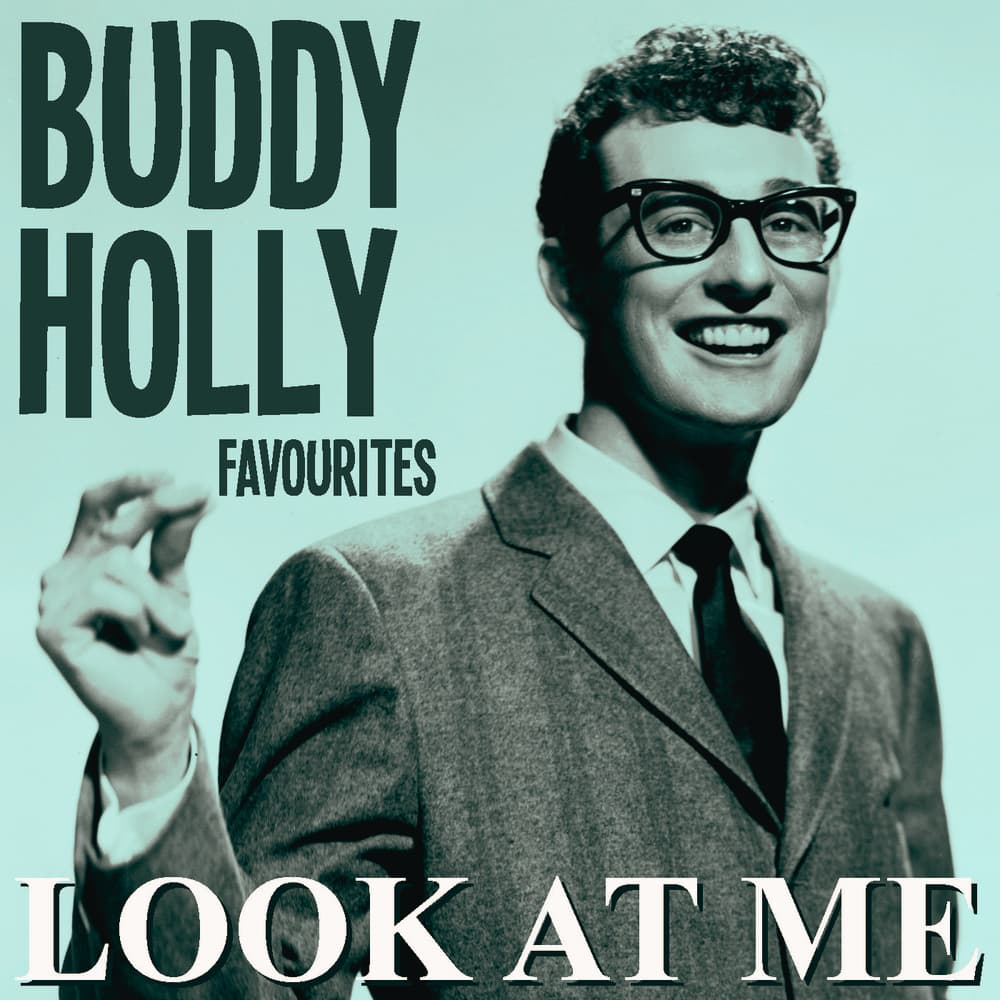
“Look At Me”: A Timeless Ballad of Love, Loss, and Lingering Presence
Ah, Buddy Holly. Just the name conjures images of a simpler time, a vibrant era when rock and roll was still finding its voice, and a young man from Lubbock, Texas, with horn-rimmed glasses and an unmistakable hiccup in his voice, was crafting tunes that would echo through generations. Today, we’re not focusing on the raucous energy of “Peggy Sue” or the infectious beat of “That’ll Be the Day.” Instead, we’re turning our attention to a much more intimate, profoundly moving piece from his repertoire: the tender ballad, “Look at Me.” This song, a heartfelt plea and a wistful remembrance, offers a window into the soul of an artist who, despite his tragically short life, left an indelible mark on music history.
While Buddy Holly‘s career was a meteoric rise, his singles consistently landed on the charts, cementing his status as a pioneer. “Look at Me,” though not one of his highest-charting hits, still found its place in the musical landscape of 1957. Released as the B-side to “That’ll Be The Day,” it contributed to the record’s impressive performance, which soared to the top of the charts, reaching number one on the Billboard Best Sellers in Stores chart and number two on the Billboard Top 100. This pairing showcased the multifaceted genius of Buddy Holly and The Crickets, demonstrating their ability to deliver both electrifying rock and roll anthems and deeply introspective, emotionally resonant ballads. Though it didn’t receive the same individual chart recognition as some of his more upbeat tracks, its inclusion on such a monumental release ensured its presence in the hearts and minds of listeners, a hidden gem waiting to be rediscovered by those who sought a deeper connection with his artistry.
The story behind “Look at Me” is intertwined with Buddy Holly‘s personal life and his remarkable prolificacy. Written during a period of intense creative output, the song reflects a sensitivity and emotional maturity that belied his young age. Many believe the lyrics are a poignant reflection on a lost love, a yearning for reconnection, or perhaps even a plea for understanding from someone distant. The simplicity of the melody, often featuring just Buddy Holly‘s voice and his acoustic guitar, amplifies the raw emotion contained within each line. It speaks to the universal human experience of longing, of that quiet ache for a past connection, a person who once filled your world with light and now exists only in memory or a hopeful wish for their return.
What truly elevates “Look at Me” beyond a simple love song is its profound sense of vulnerability and sincerity. Buddy Holly wasn’t just singing words; he was pouring out his heart. The lyrics, with their direct appeal – “Look at me, I’m as lonely as I can be” – are disarmingly honest. They capture that moment of quiet desperation, the feeling of being adrift and yearning for a familiar anchor. For older listeners, this song can evoke a flood of memories: first loves, partings that left a lasting sting, and the enduring hope that some connections, no matter how fractured, might one day be mended. It’s a testament to the power of a simple plea, a whispered hope carried on the wind, that someone, somewhere, is still looking your way.
Beyond its lyrical content, the sparse arrangement of “Look at Me” is a masterclass in understated elegance. In an era often characterized by burgeoning instrumentation and complex arrangements, Holly‘s decision to strip the song down to its bare essentials allowed his voice and the emotional weight of the lyrics to take center stage. This intimate setting creates a sense of direct communication, as if Buddy Holly is singing directly to you, sharing his deepest feelings in a hushed confession. It’s a song that invites introspection, a quiet companion for moments of reflection, reminding us that even amidst the grand narratives of our lives, it’s often the simplest sentiments that resonate most deeply and stay with us the longest. “Look at Me” is more than just a song; it’s a timeless whisper from the past, a gentle reminder of the enduring power of love, loss, and the quiet hope that someone, somewhere, is still looking your way.